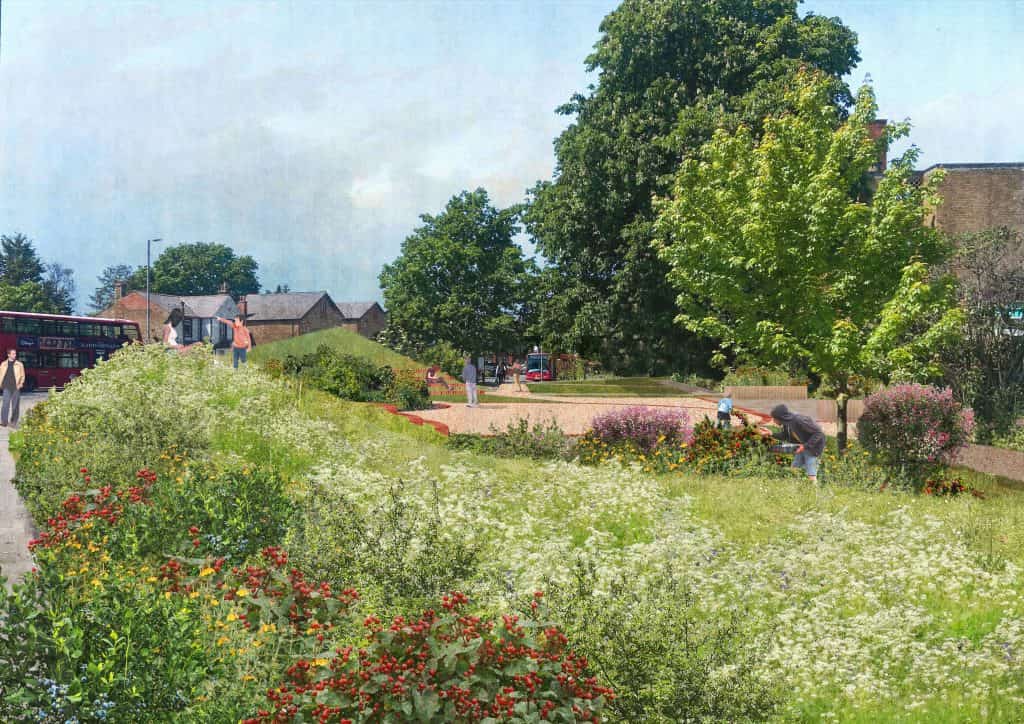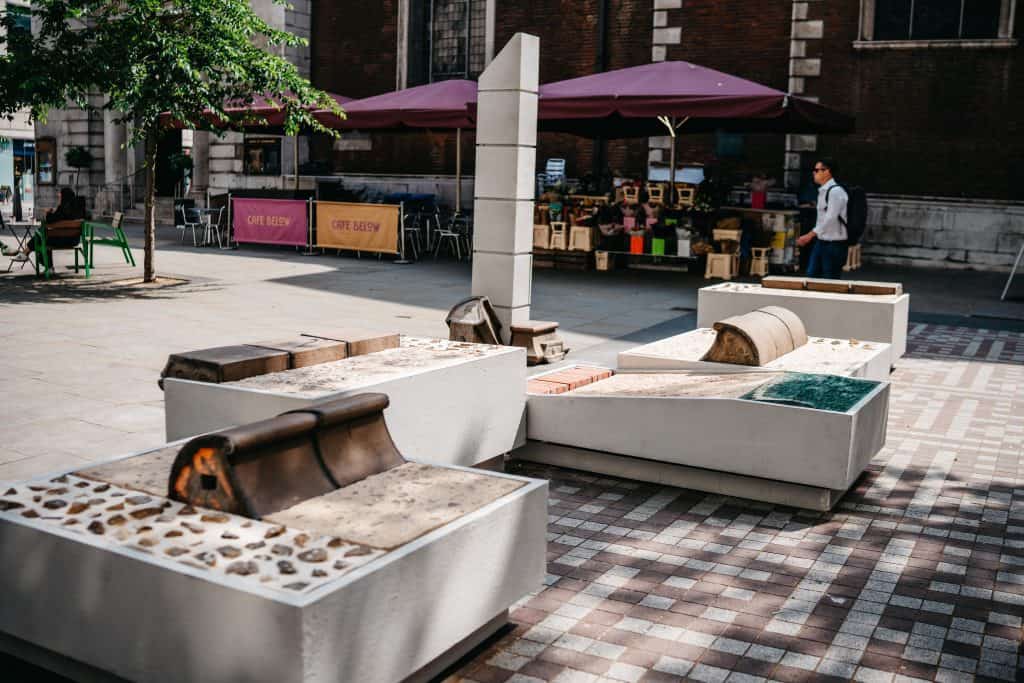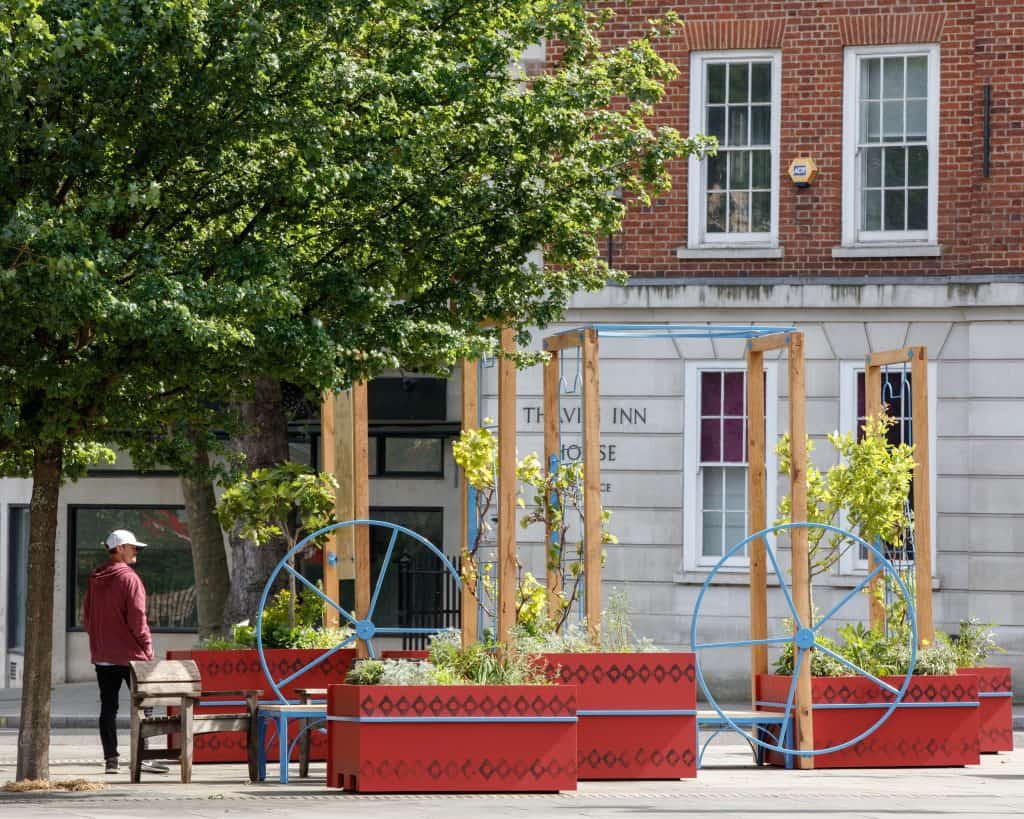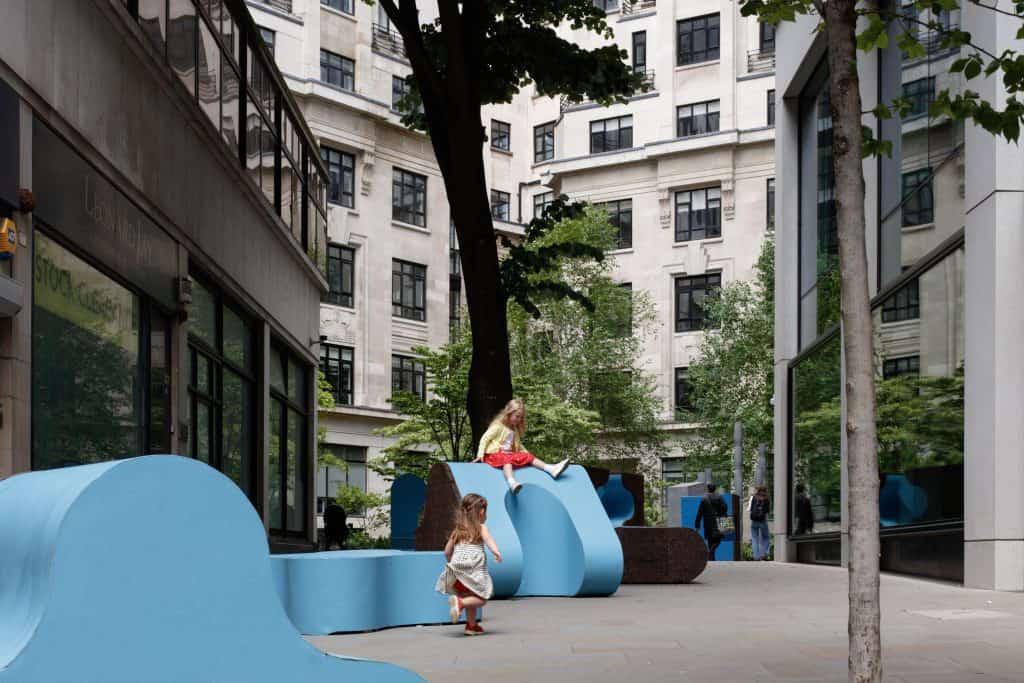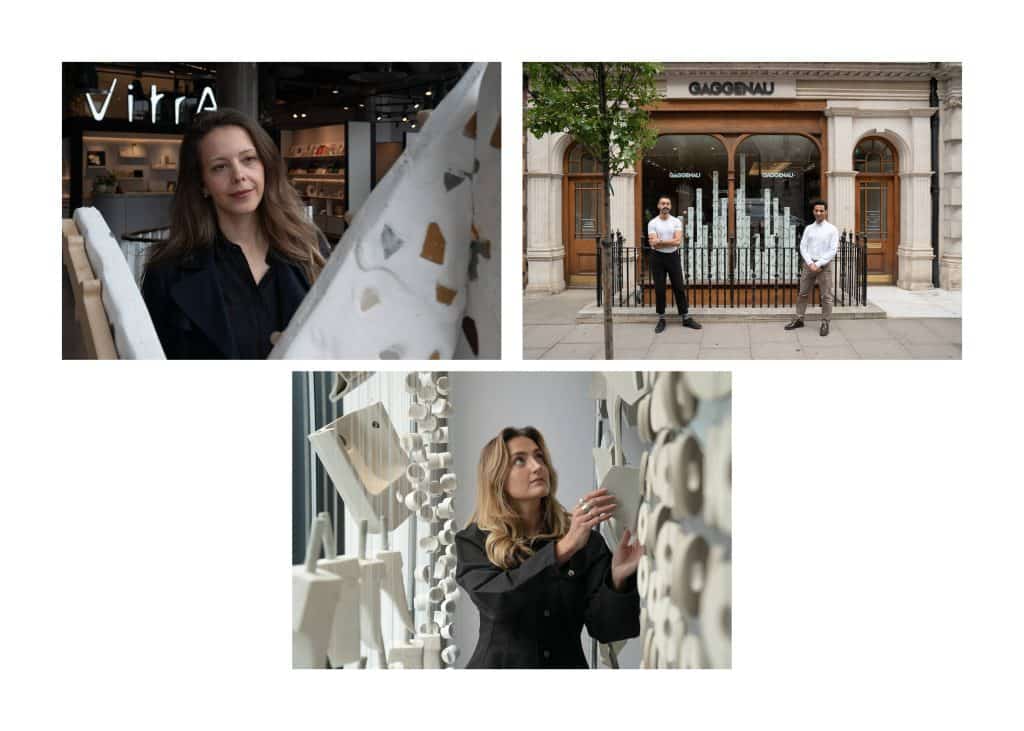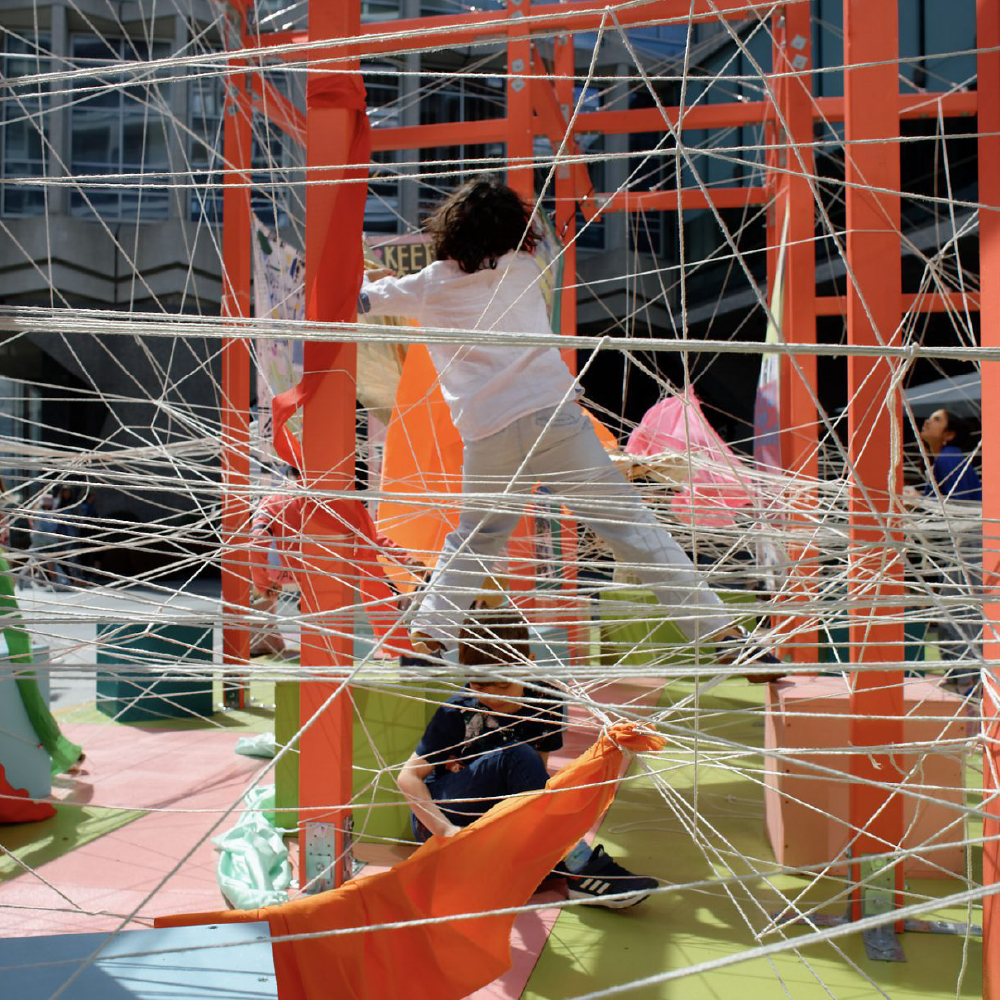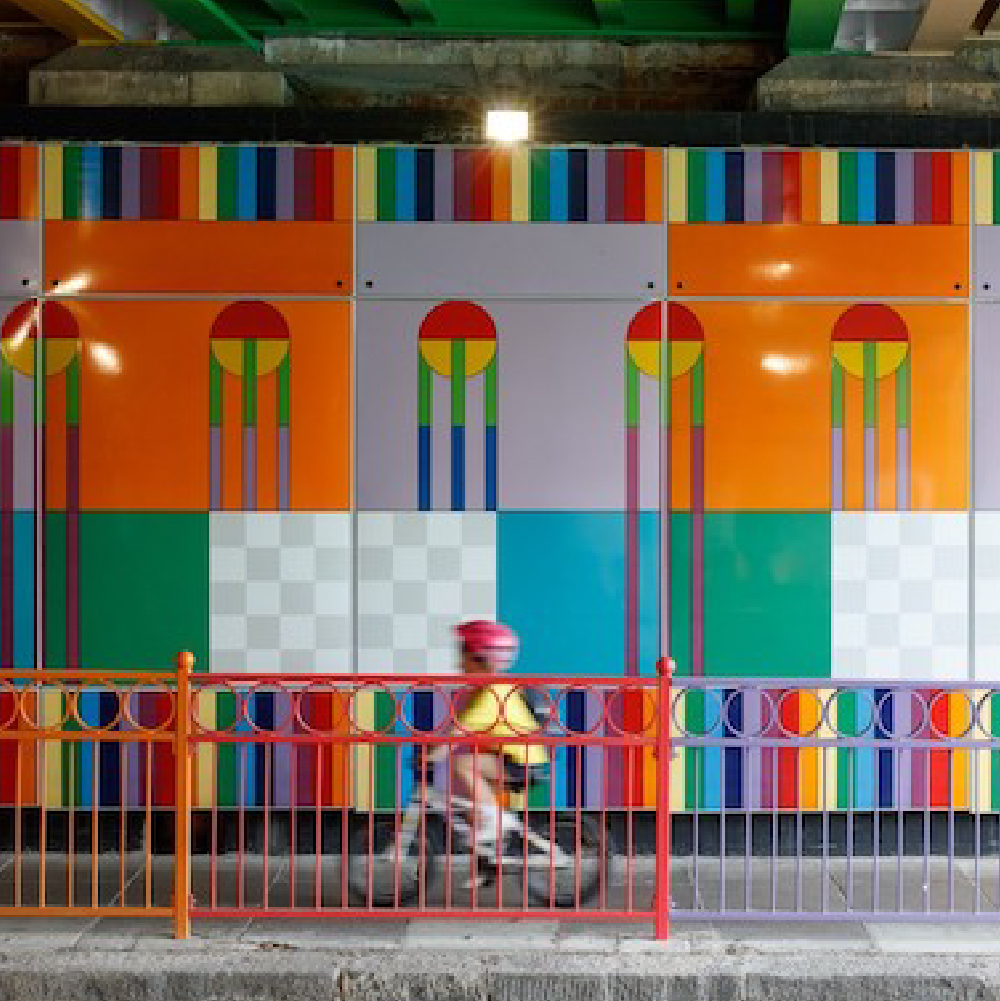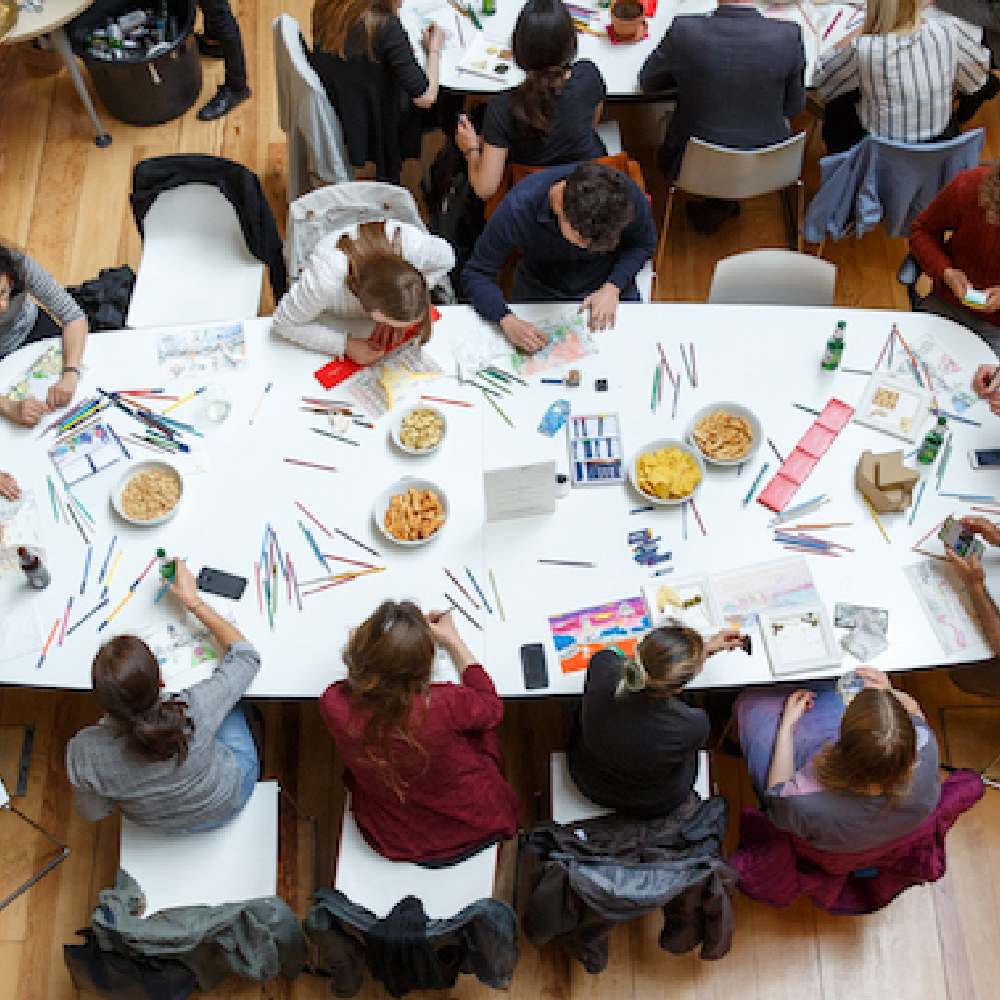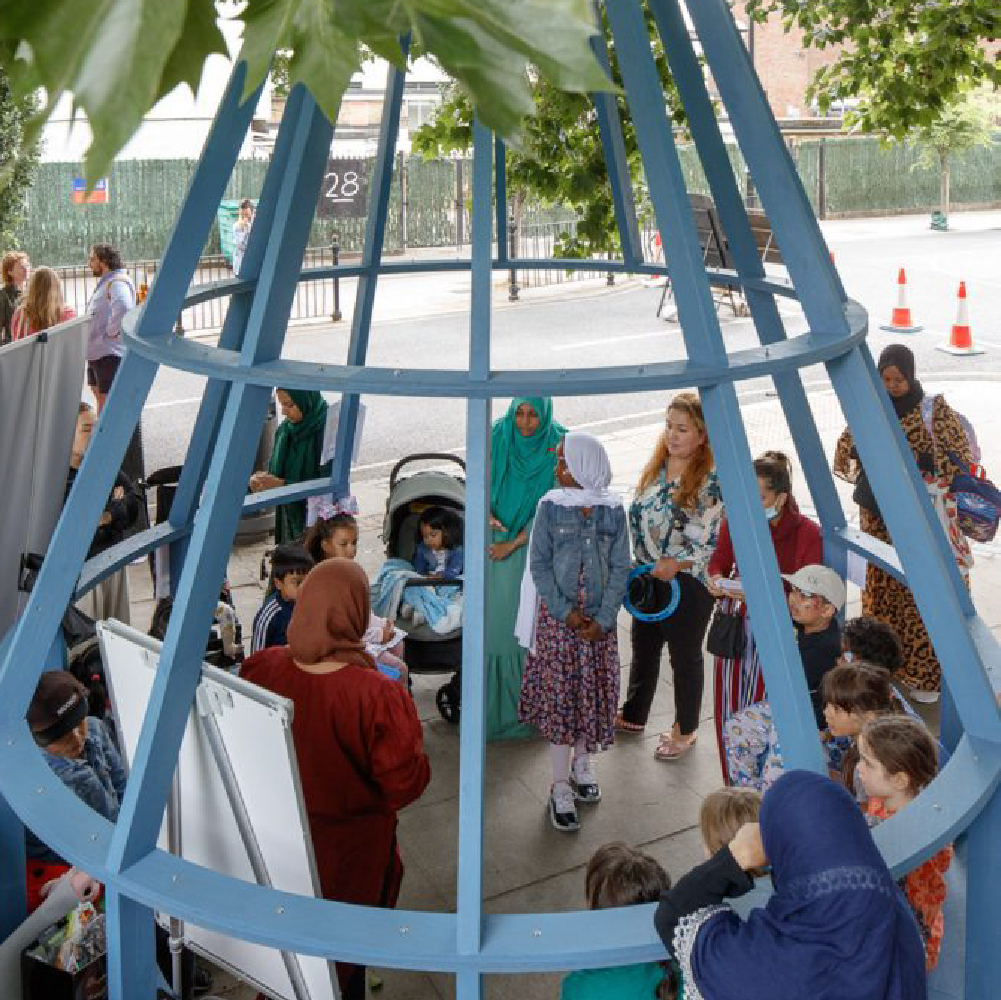IF-DO really have created something glorious : above, around, from afar and close up. It shines in the light and is airy, yet solid. The Dulwich Pavilion deserves to be girded with praise.
Seeing it as part of Dulwich Pavilion Lates, it’s set off by interaction with visitors and its creators. Architects Sarah, Al and Thomas showed how ingenious the installation was … in a rather snug site. The Pavilion both responds to the proportions and datum of its Soane neighbour while highlighting the contrasts. The mirrored surfaces, which are flexible, opened up to create a small auditorium one side and pop-up bar on the other. You are intrigued and drawn in, and then deflected, as your path doesn’t led you through after all… the changing faces are all part of the fun and the festival spirit.
As well as a home to the collection of paintings – one of oldest public art galleries – Soane designed Dulwich to house the tombs of Bourgeois and Desenfans, who assembled the original picture collection. We were encouraged experience the old masters inside as well as the design from the outside while Tom Wilkinson spoke about Soane, Death and Memory.
Dulwich sits in heart of the borough of Southwark, bounded on two sides by Camberwell and Peckham. Giving an extra dimension to this evening of contrasts was a 1963 ‘short’ from the bfi archives. Contextualising urban responses to post-war building, especially housing , The Changing Face of Camberwell had a more topical resonance as it featured the Sceaux Estate. Our remembrance isn’t that of Pevsner : ‘Camberwell’s showpiece of 1955-9’ but of the tower block fire at Lakanal House, in 2009, now recalled because of tragic events at Grenfell Tower.
While there is much to celebrate, the end of the evening Space/Places/ People left me feeling reflective against the background of Soane’s mausoleum, on the events in London just two days earlier.

